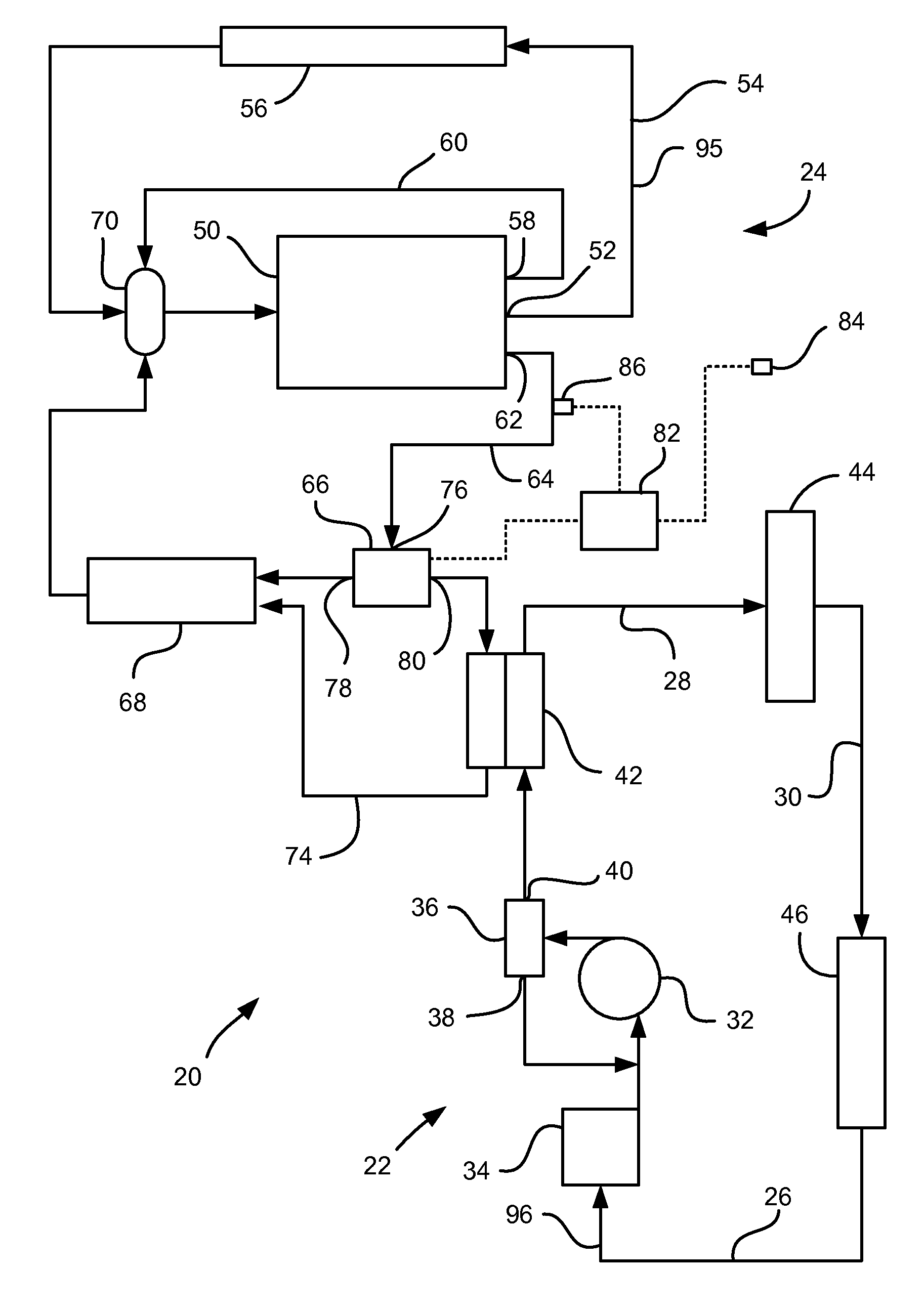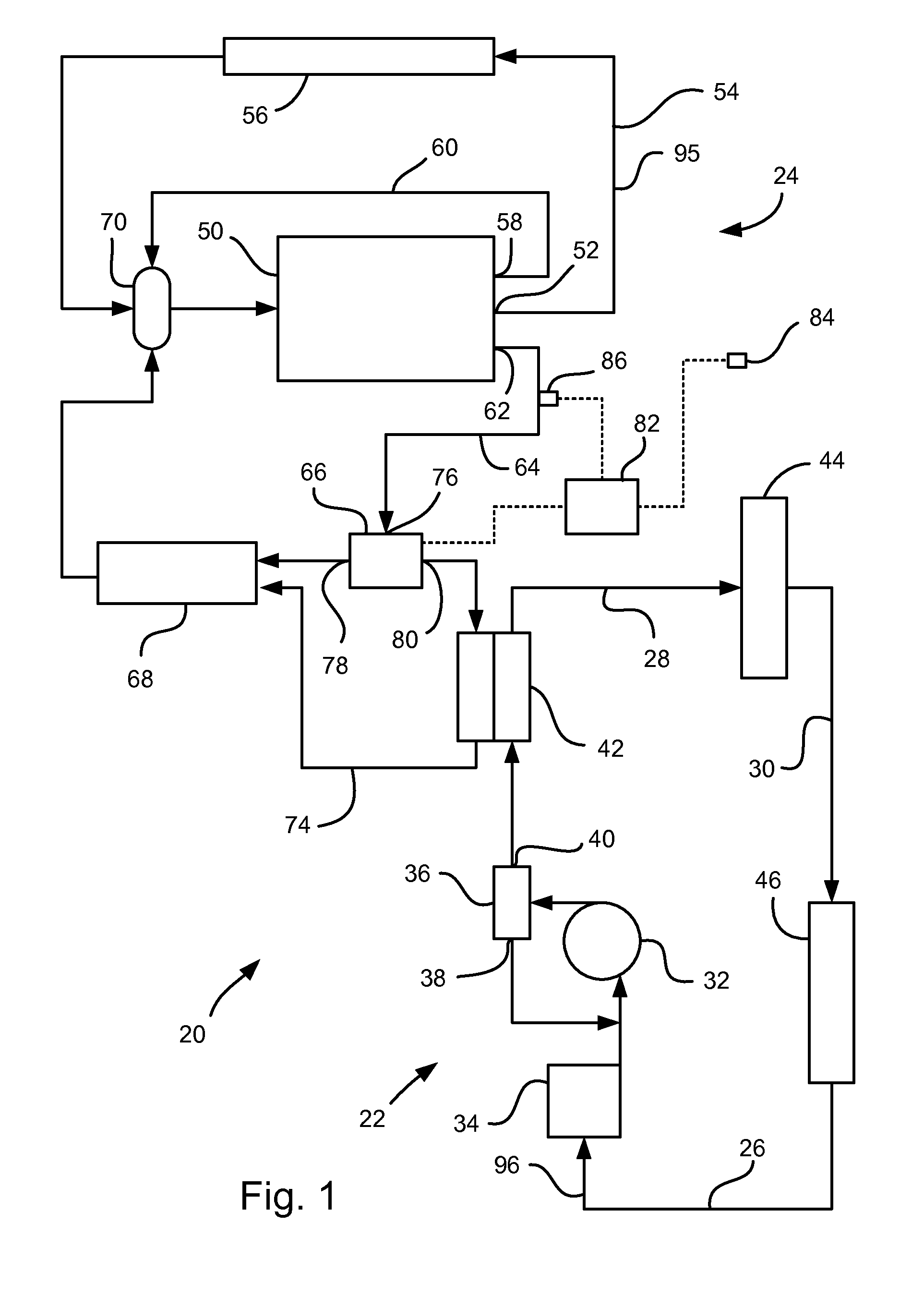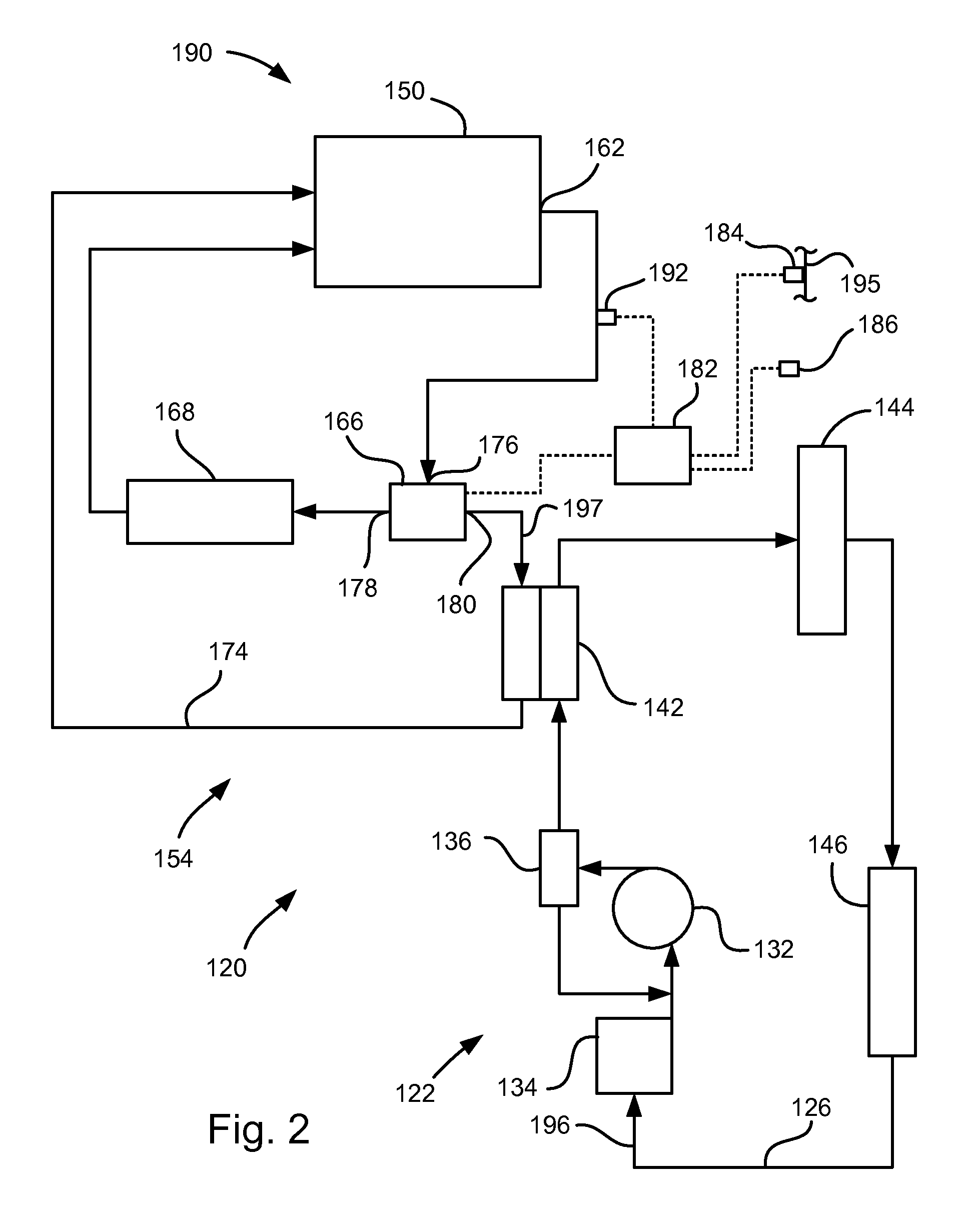Vehicle power steering waste heat recovery
a technology of power steering and waste heat recovery, which is applied in the direction of indirect heat exchangers, machines/engines, light and heating equipment, etc., can solve the problems of slow warm-up of passenger cabins, counter to the original intended purpose of improving vehicle fuel economy, and increase the cost of fuel consumption. , to achieve the effect of enhancing the heater performance of heating, ventilation and air conditioning systems, and restoring energy
- Summary
- Abstract
- Description
- Claims
- Application Information
AI Technical Summary
Benefits of technology
Problems solved by technology
Method used
Image
Examples
Embodiment Construction
[0010]Referring to FIG. 1, a waste heat recovery system 20 for a vehicle is shown. The waste heat recovery system 20 encompasses portions of a power steering system 22 and a heating, ventilation and air conditioning (HVAC) system 24.
[0011]The power steering system 22 includes a hydraulic system 26 having a high pressure line 28 and low pressure line 30. The arrowheads on the lines between illustrated components in FIGS. 1 and 2 represent fluid lines, with the arrows indicating the direction of fluid flow in the particular line when there is flow in that line. A power steering pump 32, which may be driven by a pulley (not shown) coupled to the engine, draws power steering fluid 96 from a power steering reservoir 34 and directs it to a power steering control valve 36. The control valve 36 directs the power steering fluid 96 either through a first outlet 38 back to the intake side of the pump 32 or forwards it through a second outlet 40 into the high pressure line 28 on the high pressu...
PUM
 Login to View More
Login to View More Abstract
Description
Claims
Application Information
 Login to View More
Login to View More - R&D
- Intellectual Property
- Life Sciences
- Materials
- Tech Scout
- Unparalleled Data Quality
- Higher Quality Content
- 60% Fewer Hallucinations
Browse by: Latest US Patents, China's latest patents, Technical Efficacy Thesaurus, Application Domain, Technology Topic, Popular Technical Reports.
© 2025 PatSnap. All rights reserved.Legal|Privacy policy|Modern Slavery Act Transparency Statement|Sitemap|About US| Contact US: help@patsnap.com



